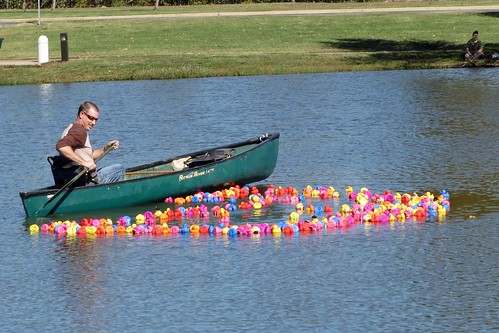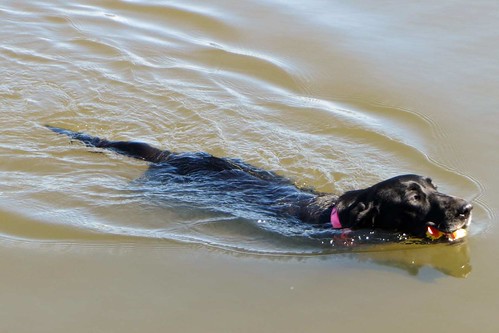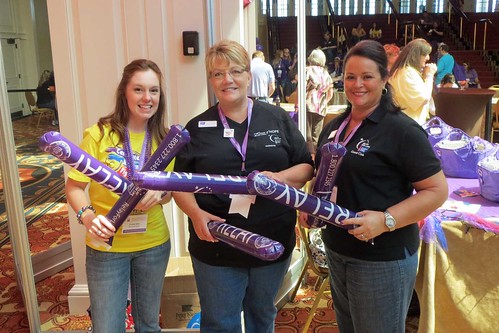Heredity and Cancer
Cancer is such a common disease that it is no surprise that many families have at least a few members who have had cancer. Sometimes, certain types of cancer seem to run in some families. This can be caused by a number of factors. Often, family members have certain risk factors in common, such as smoking, which can cause many types of cancer.
But in some cases the cancer is caused by an abnormal gene that is being passed along from generation to generation. Although this is often referred to as inherited cancer, what is inherited is the abnormal gene that can lead to cancer, not the cancer itself. Only about 5% to 10% of all cancers are inherited. This document focuses on those cancers.
DNA, genes, and chromosomes
Cancer is a disease of abnormal gene function. Genes are pieces of DNA (deoxyribonucleic acid). They contain the instructions on how to make the proteins the body needs to function, when to destroy damaged cells, and how to keep the cells in balance. Your genes control things such as hair color, eye color, and height. They also can affect your chance of getting certain diseases, such as cancer.
An abnormal change in a gene is called a mutation. The 2 types of mutations are inherited and acquired (somatic).
- Inherited gene mutations are passed from parent to child through the egg or sperm. These mutations are in every cell in the body.
- Acquired (somatic) mutations are not present in the egg or sperm. These mutations are acquired at some point in the person's life, and are more common than inherited mutations. This type of mutation occurs in one cell, and then is passed on to any new cells that are the offspring of that cell.
Genes are found on long strands of DNA called chromosomes. Humans have 23 pairs of chromosomes in each cell. We inherit one set of chromosomes from each parent. Each chromosome can contain hundreds or thousands of genes that are passed from the parents to the child. Every cell in your body has all of the genes you were born with. Although all cells have the same genes and chromosomes, different cells (or types of cells) may use different genes. For example, muscle cells use a different set of genes than skin cells use. The genes that the cell doesn't need are turned off and not used. The genes that the cell is using are activated or turned on.
Genes and cancer
Genes seem to have 2 major roles in cancer. Some, called
oncogenes, can cause cancer. Others, known as
tumor suppressor genes, stop cancer from developing or growing. More information about oncogenes and tumor suppressor genes can be found in our document,
Oncogenes, Tumor Suppressor Genes, and Cancer.
Oncogenes are mutated forms of certain normal genes of the cell called proto-oncogenes. Proto-oncogenes are often genes that normally control what kind of cell it is and how often it grows and divides. When a proto-oncogene mutates (changes) into an oncogene, it turns on or activates when it is not supposed to be. When this occurs, the cell can grow out of control, leading to cancer.
Tumor suppressor genes are normal genes that slow down cell division, repair DNA mistakes, or tell cells when to die (a process known as apoptosis or programmed cell death). When tumor suppressor genes don’t work properly, cells can grow out of control, which can lead to cancer.
A tumor suppressor gene is like the brake pedal on a car. It normally keeps the cell from dividing too quickly just as a brake keeps a car from going too fast. When something goes wrong with the gene, such as a mutation, cell division can get out of control.
An important difference between oncogenes and tumor suppressor genes is that oncogenes result from the activation(turning on) of proto-oncogenes, but tumor suppressor genes cause cancer when they are inactivated (turned off).
Even if you were born with healthy genes, some of them can become changed (mutated) over the course of your life. These mutations are known as sporadic or somatic, meaning they are not inherited. Sporadic mutations cause most cases of cancer. These mutations may be caused by things that we are exposed to in our environment, including cigarette smoke, radiation, hormones, and diet (although in many cases there is no obvious cause). More gene mutations build up as we get older, leading to a higher risk of cancer.
When someone has inherited an abnormal copy of a gene, their cells already start out with one mutation. This makes it all the easier (and quicker) for enough mutations to build up for a cell to become cancer. That is why cancers that are inherited tend to occur earlier in life than cancers of the same type that are not inherited.
When should I worry?
When many cases of cancer occur in a family, it is most often due to chance or because family members have been exposed to a common toxin, such as cigarette smoking. Less often, these cancers may be caused by an inherited gene mutation. (These are called family cancer syndromes.) Certain things make it more likely that an abnormal gene is causing cancers in a family, such as
- Many cases of an uncommon or rare type of cancer (like kidney cancer)
- Cancers occurring at younger ages than usual (like colon cancer in a 20 year old)
- More than one type of cancer in a single person (like a woman with both breast and ovarian cancer)
- Cancers occurring in both of a pair of organs (both eyes, both kidneys, both breasts)
- More than one childhood cancer in a set of siblings (like sarcoma in both a brother and a sister)
Before you decide that cancer runs in your family, first gather some information. For each case of cancer, look at:
- Who is affected? How are we related?
- What type of cancer is it? Is it rare?
- How old was this relative when they were diagnosed?
- Did this person get more than one type of cancer?
- Did they smoke or have other known risk factors?
Cancer in a close relative, like a parent or sibling (brother or sister), is more cause for concern than cancer in a more distant relative. Even if the cancer was from a gene mutation, the chance of it passing on to you gets lower with more distant relatives.
It is also important to look at each side of the family separately. Having 2 relatives with cancer is more concerning if the people are related to each other (meaning that they are both on the same side of the family). For example, if both relatives are your mother's brothers it means more than if one was your father's brother and the other was your mother's brother.
The type of cancer matters, too. More than one case of the same rare cancer is more worrisome than cases of a more common cancer. And having the same type of cancer in many relatives is more concerning than if it is several different kinds of cancer. Still, in some family cancer syndromes, a few types of cancer seem to go together. For example, breast cancer and ovarian cancer run together in families with hereditary breast and ovarian cancer syndrome (HBOC). Colon and endometrial cancers tend to go together in a syndrome called hereditary non-polyposis colorectal cancer (HNPCC), also known as Lynch syndrome.
The age of the person when the cancer was diagnosed is also important. For example, colon cancer is rare in people under 30. Having 2 or more cases in close relatives under 30 could be a sign of an inherited cancer syndrome. On the other hand, prostate cancer is very common in elderly men, so if both your father and his brother were found to have prostate cancer when they were in their 80s, it is less likely to be due to an inherited gene change.
When many relatives have the same type of cancer it is important to notice if the cancer could be related to smoking. For example, lung cancer is commonly caused by smoking, so many cases of lung cancer in a family of heavy smokers is more likely to be due to smoking than to an inherited gene change.
Types of cancer
For many types of cancer, a portion of those cancers are linked to a family history. Breast, ovarian, prostate, and colon are some of these cancers. Some of these are discussed briefly here, but only to help explain heredity and cancer. Please refer to the American Cancer Society specific cancer site documents for more information about a particular type of cancer and its genetic components, diagnosis, and treatment.
Breast cancer
Many women are concerned that breast cancer seems to run in their family. A woman who has a first-degree relative (a mother, sister, or daughter) with breast cancer is about twice as likely to develop breast cancer as a woman without a family history of this cancer. Still, most cases of breast cancer, even those in close relatives, are not part of a family cancer syndrome caused by an inherited gene mutation.
The chance that someone has an inherited form of breast cancer is higher the younger they are when they get the cancer and the more relatives they have with the disease. Inherited breast cancer can be caused by several different genes, but the most common are BRCA1 and BRCA2. Inherited mutations in these genes cause hereditary breast and ovarian cancer syndrome (HBOC). Along with breast and ovarian cancer, this syndrome can also lead to male breast cancer, pancreatic cancer, prostate cancer, as well as some others. This syndrome is more common in women of Ashkenazi Jewish descent than it is in the general US population.
Women with a strong family history of breast cancer may choose to undergo genetic counseling to estimate their risk for inherited breast cancer. They then can choose to be tested to find out if they have a breast cancer gene mutation. If a mutation is present, the woman has a high risk of developing breast cancer. She may start getting mammograms at an age younger than 40, have special breast cancer screening tests, or take other measures to try to reduce her risk of getting breast cancer.
Colon cancer
One cause of hereditary colon cancer is a disease called familial adenomatous polyposis (FAP). People with this disease start getting colon polyps by their teen years, and over time may have hundreds of polyps in their colon. If left alone, at least one of these polyps will become cancer. The gene for this syndrome is called APC, and testing for mutations in this gene is available. If FAP is diagnosed early in life, surgery to remove the colon is often used to stop the cancer from developing.
The most common inherited syndrome that increases a person's risk for colon cancer is called hereditary non-polyposis colorectal cancer (HNPCC), or Lynch syndrome. People with this syndrome have a high risk of colorectal cancer. Most of these cancers occur before age 50. People with HNPCC may also have polyps, but they only have a few, not hundreds as in FAP. HNPCC also leads to a high risk of endometrial cancer (cancer in the lining of the uterus) in women. Other cancers linked with HNPCC include cancer of the ovary, stomach, small intestine, pancreas, kidney, brain, ureters (tubes that carry urine from the kidneys to the bladder), and bile duct.
HNPCC is caused by mutations in one of the DNA repair enzyme genes MLH1, MSH2, MSH6, PMS1, or PMS2. Mutations in these genes can be found through genetic testing. Another option for people with colorectal cancer is to have the tumor tissue tested for changes that can be caused when one of these genes is faulty. These changes are known as microsatellite instability (or MSI). Having normal findings (no MSI) implies that HNPCC is not present and that the genes that cause it are normal.
Someone who is known to carry an HNPCC gene mutation may start colonoscopy screening at an early age (such as during their early 20s) to find cancers and polyps early. Some people even have surgery to remove of most of the colon to try to prevent cancer from starting. Women with HNPCC may choose to be screened for endometrial cancer. Some even have their uterus removed after they have finished having children.
Childhood cancers
Like adult cancers, most childhood cancers are not inherited. They are caused by mutations acquired during the child's life. Some of these may even have occurred before the child was born (while still in the womb). A few types of childhood cancers are known to occur more often in some families. Some of these are due to hereditary cancer syndromes.
Retinoblastoma: This is a childhood cancer that starts in the eye. It can be caused by an inherited mutation in the tumor suppressor gene Rb. In about 1 out of 4 children with retinoblastoma, the abnormal gene is in every cell in the body. In most of these cases, this is due to a new mutation (gene change) in the sperm or egg. In some cases though, the abnormal copy of Rb was inherited from a parent.
Even though the child has a remaining normal copy of the Rb gene, he or she is likely to develop this cancer. This is because there is no backup to stop the mutated gene from making abnormal cells if the remaining healthy Rb gene stops working in even one cell.
Patients with the hereditary form of retinoblastoma are more likely to get tumors in both eyes. They also have an increased risk of developing other types of cancer, including cancers of the bone, brain, nasal cavities, and a type of skin cancer (melanoma).
Li-Fraumeni syndrome: This syndrome occurs when a person inherits a mutation in the gene for p53 (TP53, a tumor suppressor gene). A normal gene for p53 stops the growth of abnormal cells. People with a TP53 gene abnormality have a higher risk of childhood sarcoma, leukemia, and brain (central nervous system) cancers.
Li-Fraumeni syndrome also raises the risk of cancers of the breast and adrenal glands. One study showed that 15% of Li-Fraumeni patients who had cancer were diagnosed later with a second cancer, and some developed a third and fourth cancer later on.
Genetic counseling and testing
People with a strong family history of cancer may want to find out about their genetic makeup. This knowledge may help the person or other family members in planning health care for the future. Since inherited mutations affect all cells of a person's body, they can often be identified by genetic testing that is done on blood samples. Genetic counseling and testing may be recommended for some people with a strong family history of cancer. For more information on genetic testing, refer to our document,
Genetic Testing: What You Need to Know.
Future directions
The Human Genome Project is an international program devoted to determining the complete DNA sequence in humans. Although all the genes have been listed, there is still a great deal to learn about what protein each gene makes. Researchers need to find out how each gene fits into the body’s activities at the cellular level and the effect that activity has on diseases such as cancer.
The hope is that the Human Genome Project will some day provide a single reference to all human genetic information, including cancer genes and markers. The impact this project will have on the future of cancer is profound. You can read more about the Human Genome Project on the Web at www.genome.gov.




.jpg)



























